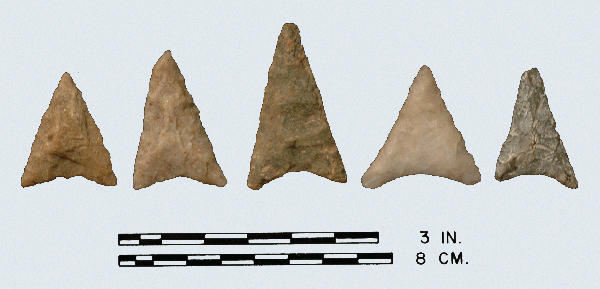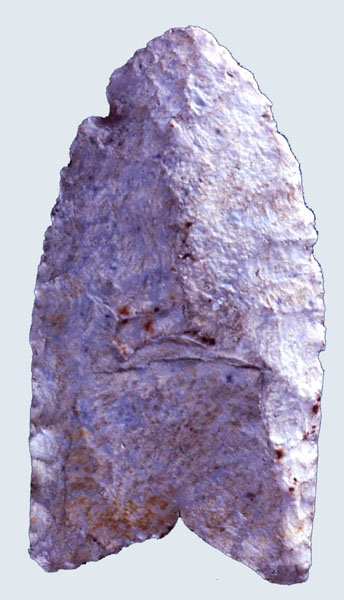
Yadkin: quartzite, quartzite, rhyolite, quartz, tuff.
Middle Woodland
Defining Attributes
The Yadkin is a large, symmetrical, and well made isosceles triangular point.
Chronology
The Yadkin point dates to the Middle and extends into the Late Woodland period, 300 to 1300 CE.
Description
- Blade: The blade is triangular and broad. Most of the points are nearly equilateral, but a few are narrow.
- Base: The base is usually concave. In some examples, the base is extremely concave, but a few of the narrower points have bases that are nearly straight.
- Size: Length ranges from 30 to 60 mm. with an average of 45 mm. Width ranges from 20 to 40 mm. with an average of 30 mm.
- Technique of manufacture: Pressure flaking; flake scars are small, narrow, and well controlled.
Discussion
The Yadkin is similar to the Levanna type defined by Ritchie (1961 revised 1971). The Levanna is a medium to large, fairly thin, triangular point with a concave base named for the Levanna Site, Cayuga County, NewYork.
Defined in Literature
This type was originally defined by Coe (1964) based on points recovered from the Doerschuk Site in the Piedmont of North Carolina.
References



